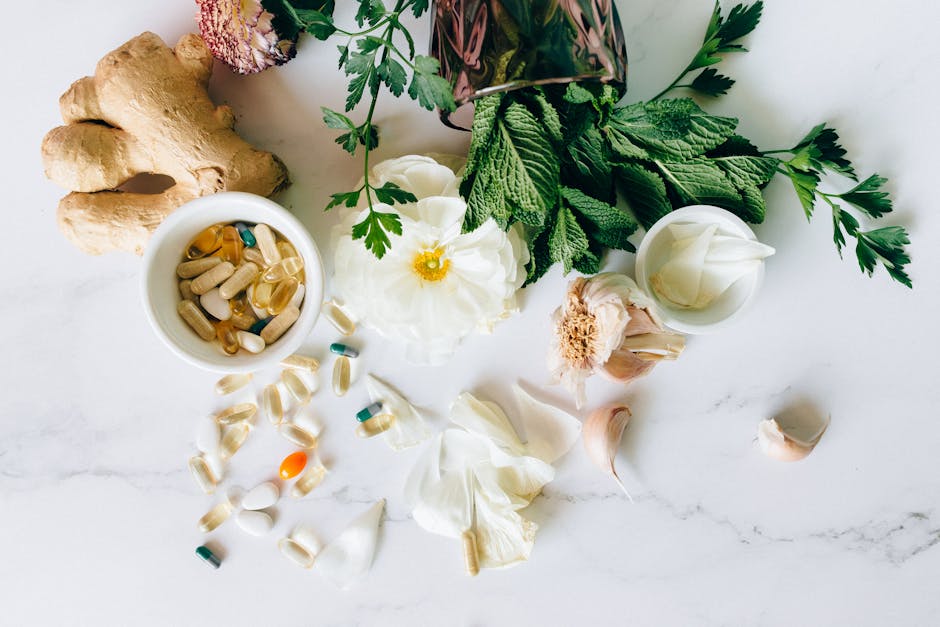
Embark on a culinary journey to the heart of Ethiopia with this comprehensive guide to crafting your own authentic berbere spice blend. Berbere is far more than just a spice; it’s the soul of Ethiopian cuisine, a complex and vibrant mixture that adds depth, warmth, and a touch of fire to countless dishes. From the rich stews known as wats to the flavorful lentil dishes, berbere is the secret ingredient that defines the Ethiopian experience. This article will not only provide you with a detailed recipe for making your own berbere spice but will also delve into its history, uses, and variations, ensuring you become a true berbere aficionado.
Berbere spice is a cornerstone of Ethiopian cooking, a complex blend of dried red chilies, warm spices, and aromatic herbs. The exact ingredients and proportions vary from family to family, making each blend unique. This recipe offers a balanced and accessible starting point, allowing you to customize the heat and flavors to your liking. Making your own berbere allows you to control the quality of ingredients, adjust the spice levels, and experience the true essence of Ethiopian culinary traditions.
Before we dive into the recipe, let’s explore the magic of berbere spice. The aroma alone is captivating, a blend of earthy, spicy, and slightly sweet notes. The flavor profile is equally complex, ranging from a gentle warmth to a fiery kick, depending on the chili peppers used. This versatility makes berbere an incredibly versatile ingredient, suitable for everything from meat and vegetable stews to marinades and dry rubs. Mastering berbere means mastering the art of Ethiopian cooking, opening up a world of exciting flavors and culinary possibilities. The beauty of berbere spice lies in its ability to transform simple ingredients into extraordinary meals.
Here’s an image placeholder. (Please generate an image depicting a vibrant display of berbere spice ingredients, including whole chilies, spices, and herbs.)
| Category | Value |
|---|---|
| Preparation Time | 30 minutes |
| Yields | Approximately 1 cup of berbere spice |
| Difficulty | Easy |
Nutrition Information (Per Serving – Estimated)
Please note that nutritional information can vary based on the specific ingredients and quantities used. These values are approximate.
- Calories: 20-30
- Total Fat: 0-1g
- Sodium: 10-20mg
- Total Carbohydrates: 3-5g
- Protein: 1-2g
- Fiber: 1-2g
- Sugars: 1-2g
Berbere spice is a blend of various ingredients, and its nutritional value can vary. The above estimates are approximate.
Berbere Spice Ingredients
This recipe provides a balanced blend, but feel free to adjust the proportions to suit your taste. The quality of your ingredients will greatly influence the final flavor of your berbere. Try to source fresh, high-quality spices whenever possible. Berbere spice is all about the blend, so have fun experimenting!
| Ingredient | Quantity | Notes |
|---|---|---|
| Dried Red Chilies (such as New Mexico or Guajillo) | 1/2 cup, stems removed | Adjust the type and amount based on desired heat level. |
| Paprika | 2 tablespoons | Use a good quality paprika for best results. |
| Ground Ginger | 1 tablespoon | Adds warmth and depth of flavor. |
| Ground Garlic | 1 tablespoon | Adds a pungent flavor. |
| Ground Coriander | 2 tablespoons | Adds a citrusy, floral note. |
| Ground Cardamom | 1 teaspoon | A key spice that adds a unique aroma. |
| Ground Fenugreek | 1 teaspoon | Adds a unique savory, slightly bitter flavor. |
| Ground Nutmeg | 1/2 teaspoon | Use freshly grated nutmeg if possible. |
| Ground Allspice | 1 teaspoon | Adds a complex, warm flavor. |
| Ground Cinnamon | 1 teaspoon | Adds a warm, sweet note. |
| Ground Cloves | 1/2 teaspoon | Use sparingly, as cloves can be overpowering. |
| Black Peppercorns | 1 teaspoon, freshly ground | Adds a peppery kick. |
| Turmeric | 1 teaspoon | Adds color and a subtle earthy note. |
| Salt | 1 teaspoon, or to taste | Enhances the other flavors. |
Cooking Instructions
- Prepare the Chilies: If using whole dried chilies, remove the stems and seeds. This will help control the heat level of your berbere. You can also toast the chilies lightly in a dry pan or oven at a low temperature (around 200°F/93°C) for a few minutes to enhance their flavor before grinding.
- Toast the Spices (Optional): Toasting the whole spices (like coriander seeds, cardamom pods, and cloves) before grinding can significantly enhance their flavor. Heat a dry skillet over medium heat and toast the spices for a few minutes, stirring constantly, until fragrant. Be careful not to burn them.
- Grind the Chilies: Grind the dried chilies into a fine powder using a spice grinder, blender, or mortar and pestle. Be sure to wear gloves when handling chilies to avoid skin irritation. If you don’t have a spice grinder, a regular blender will work, but you may need to pulse the ingredients and scrape down the sides frequently.
- Combine the Spices: In a bowl, combine the ground chilies, paprika, ground ginger, ground garlic, ground coriander, ground cardamom, ground fenugreek, ground nutmeg, ground allspice, ground cinnamon, ground cloves, black peppercorns, turmeric, and salt.
- Mix Thoroughly: Use a whisk or spoon to thoroughly combine all the spices. Make sure there are no lumps and that the mixture is evenly blended.
- Taste and Adjust (Optional): Taste a small pinch of the berbere spice. Adjust the spices to your liking. You can add more chili powder for heat, more coriander for citrusy notes, or adjust any other spice to your preference. Remember that berbere spice is meant to be customized to your own taste.
- Store the Berbere: Transfer the berbere spice to an airtight container. Store it in a cool, dark, and dry place. Properly stored berbere spice can last for several months, but for the best flavor, use it within 6 months.
This berbere spice recipe is a versatile base for many Ethiopian dishes. Feel free to experiment with the ingredients to create your own signature blend. The beauty of berbere is its adaptability.
Serving Suggestions
- Doro Wat: Use berbere to create the rich and flavorful sauce for this classic Ethiopian chicken stew.
- Misir Wat: Add berbere to lentil stew for a hearty and satisfying vegetarian dish.
- Tibs: Marinate meat (beef, lamb, or chicken) in berbere and other spices before sautéing or grilling.
- Marinades: Use berbere as a marinade for meats or vegetables before grilling or roasting. The complex flavors of berbere will infuse the food with delicious flavor.
- Dry Rubs: Apply berbere as a dry rub to meats before grilling, roasting, or smoking.
- Spice Blends: Experiment by combining berbere with other spices to create unique blends for various dishes.
- Vegetable Dishes: Sprinkle berbere on roasted vegetables for an added layer of flavor.
- Sauces and Dips: Use berbere to add heat and depth to sauces and dips.
The possibilities are endless. Berbere spice is a fantastic addition to any kitchen, allowing you to explore the vibrant flavors of Ethiopian cuisine. The delicious flavors of berbere will elevate your cooking to the next level.
Notes and Tips
- Chili Pepper Selection: The type of chili peppers you use will greatly affect the heat level of your berbere. For a milder blend, use a combination of milder chilies like New Mexico or Guajillo. For a spicier blend, incorporate some hotter chilies like cayenne or bird’s eye chilies.
- Freshness is Key: Use fresh spices whenever possible. Spices lose their potency over time. Consider buying whole spices and grinding them yourself for the freshest flavor. The quality of the berbere spice depends on the quality of the ingredients.
- Adjust to Taste: Don’t be afraid to experiment with the spice ratios. Taste the blend as you go and adjust the spices to your preference. Some people prefer a spicier berbere, while others prefer a more balanced flavor profile.
- Storage: Store your berbere spice in an airtight container in a cool, dark place. This will help preserve its flavor and aroma. Avoid storing it near heat or light sources.
- Spice Grinder: A dedicated spice grinder is ideal for grinding spices, but a high-powered blender or a mortar and pestle can also work.
- Gloves: Always wear gloves when handling chili peppers, especially if you are sensitive to capsaicin.
- Roasting Chilies: Roasting the chilies before grinding can enhance their flavor. Roast them in a dry skillet or oven at a low temperature until they become fragrant.
- Authenticity: While this recipe is a great starting point, remember that authentic berbere recipes can vary. Experiment with different ingredients and ratios to find your perfect blend.
- Customization: Feel free to add other spices, such as ajowan seeds or cumin, to your berbere for added complexity.
- Source Ingredients: Look for high-quality spices from reputable sources. Ethnic grocery stores often have a great selection of spices.
- Heat Level: Adjust the amount of chili peppers to control the heat level. Start with a smaller amount and add more to taste. The heat of the berbere can vary widely.
Berbere spice is a gift from Ethiopia, a complex and flavorful blend that adds depth and warmth to your cooking. By making your own berbere, you can control the ingredients and create a spice blend tailored to your preferences. This recipe is a starting point; feel free to adapt it to your liking. Berbere spice is incredibly versatile and can be used in many dishes. The unique flavor profile of berbere will become a staple in your kitchen. Enjoy the journey of exploring the flavors of Ethiopia with this amazing berbere spice recipe! The aroma of berbere will fill your kitchen with a delightful fragrance. The versatility of berbere spice makes it a must-have in any spice rack. Berbere spice is more than just a spice; it’s an experience. Discover the magic of berbere spice and transform your cooking today. Berbere spice is a culinary adventure waiting to be explored. Experiment with berbere spice and create your own masterpieces. The secret ingredient to delicious Ethiopian cuisine is berbere spice! Berbere spice is the taste of Ethiopia, waiting for you to discover.

